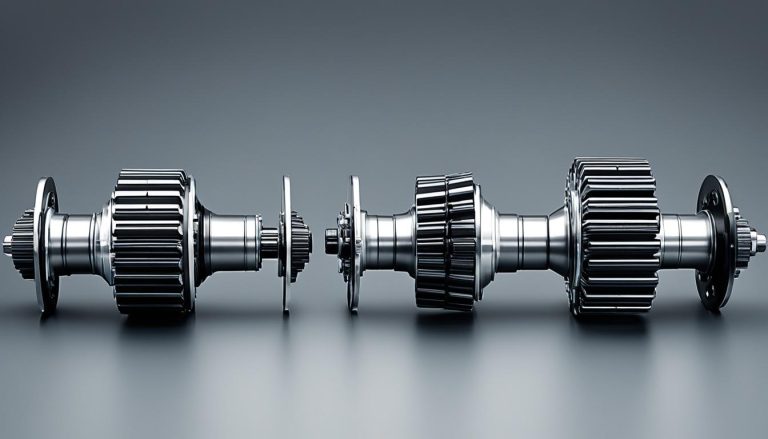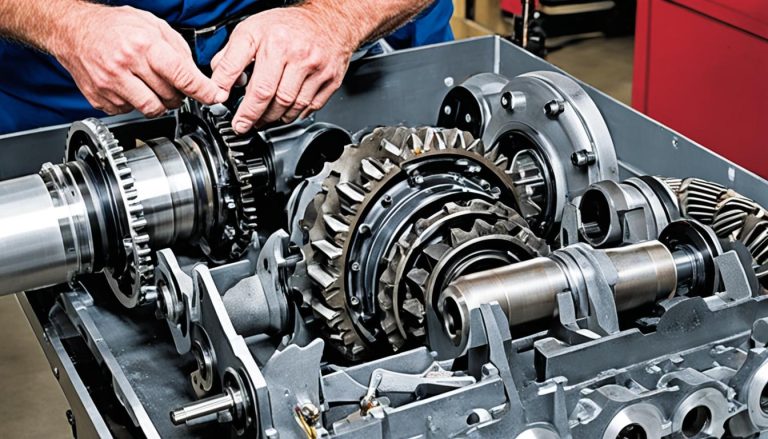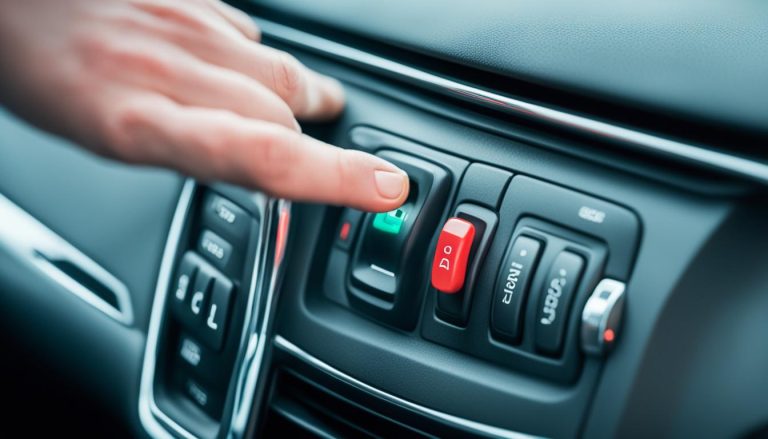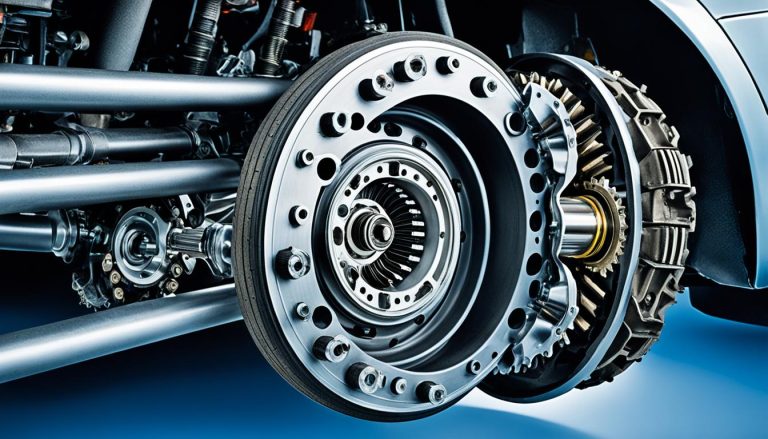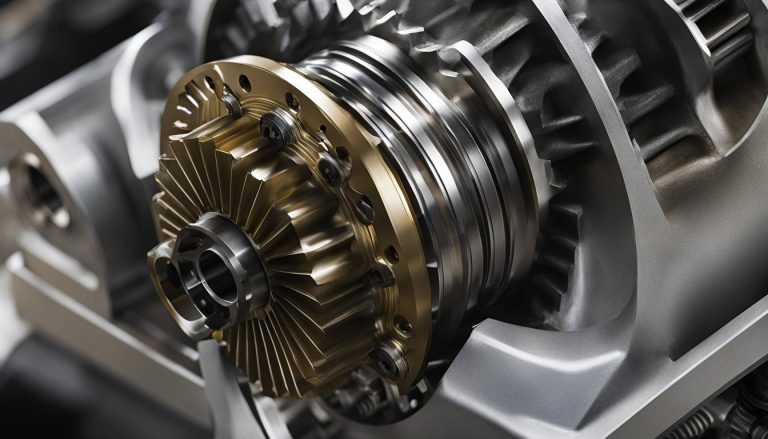Troubleshooting Ford Edge ST Limited Slip Differential
As a Ford Edge ST owner, you take pride in your vehicle’s performance – the way it gracefully handles every curve and confidently distributes power for those spirited accelerations. But what happens when you start noticing limited slip differential problems, such as your Ford Edge ST limited slip differential failure? Not only can such issues dampen the thrill of your drive, but they can also signal a need for immediate attention to prevent further damage. If you’re wondering how to fix limited slip differential problems in your Ford Edge ST, you’re in the right place. Let’s delve into those disconcerting messages from your car’s system, and guide you through how to diagnose and fix these hiccups to restore your Edge ST to its peak condition.
Key Takeaways
- Addressing limited slip differential issues in your Ford Edge ST is crucial for maintaining performance.
- System messages like “Check Electronic Limited Slip Differential” signify potential setbacks.
- Cooling the system or correcting tire size can sometimes resolve electronic LSD issues.
- Ignoring limited slip differential problems could lead to significant failures.
- Professional diagnosis and repair are recommended for intricate LSD concerns.
- Understanding and following through with proper LSD maintenance will save you time and money.
Limited Slip Differential Problems Ford Edge ST: An Overview
If you own a Ford Edge ST, you may already appreciate the dynamic driving experience it offers. A key component in maintaining this performance is the vehicle’s limited slip differential (LSD). When your Ford Edge ST’s LSD is running smoothly, it’s probably the last thing on your mind. However, understanding the complexities of troubleshooting limited slip differential issues is essential for any car enthusiast or concerned owner. Let’s delve into what makes the LSD so crucial, how regular maintenance can prevent common problems, and the potential performance impacts of LSD issues.
Understanding the Functionality of Your Ford Edge’s LSD
The heart of a pleasant and controlled driving experience in your Ford Edge ST lies in its LSD. This sophisticated component works to evenly distribute power between the wheels, ensuring that each tire receives exactly what it needs to navigate through various driving conditions. Whether you’re accelerating over slick surfaces or taking on sharp corners, your LSD quietly and efficiently performs torque adjustments without your notice.
Importance of Regular Maintenance for the LSD System
Regular inspections and Ford Edge ST limited slip differential maintenance are not just recommended; they are crucial. Neglecting the health of your LSD can lead to parts seizing from overheating. This, in turn, can lead to more complex problems down the line. Keeping on top of fluid changes, remaining mindful of driving habits, and staying attuned to the sounds of your vehicle, all play a role in preserving the intricate mechanisms of your LSD.
How Does the LSD Affect Overall Vehicle Performance?
Imagine launching your vehicle or cruising through a bend when suddenly you encounter wheel hop or a strange binding sensation. These are telltale signs that you might be facing LSD issues. Adequately diagnosing limited slip differential problems in your Ford Edge ST is paramount for maintaining not just your LSD, but your drivetrain as a whole. Failure to address these early signs can lead to a cascade of damage, affecting the overall performance and possibly leading to costly repairs. By understanding these components and their signs of distress, you become better equipped at troubleshooting the limited slip differential in your Ford Edge ST before they escalate.
Common Signs of a Failing Limited Slip Differential in the Ford Edge ST
As the proud owner of a Ford Edge ST, it’s essential to stay vigilant for any signs that may indicate an issue with your limited slip differential (LSD). A fully functioning LSD is crucial for optimized traction and handling, but when it starts to fail, it can lead to a suite of problems that diminish your vehicle’s performance and safety.
Unexpected Noises: Identifying Potential LSD Issues
One tell-tale sign of Ford Edge ST limited slip differential issues is the presence of unusual noises coming from the vehicle’s undercarriage. If you start hearing grinding, clunking, or whining sounds, especially when executing turns, it might be Ford Edge ST limited slip differential noise indicating seized or worn components.
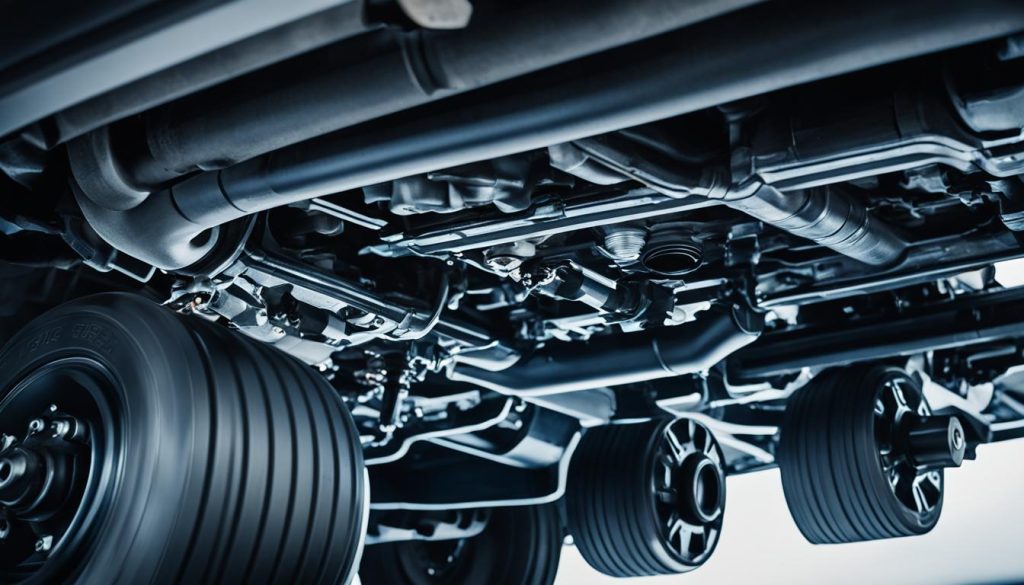
Performance Limitations: When Your LSD Needs Attention
Reduced traction or a general feeling of instability during acceleration are signs of a failing limited slip differential in Ford Edge ST. Should you notice that your vehicle is not maintaining its usual grip on the road or seems to struggle with maintaining consistent performance, it’s probable that your LSD is not distributing torque properly between the wheels due to possible internal damage or wear.
Electronic LSD Messages: Interpreting What Your Vehicle Tells You
Another critical indicator of LSD problems is your vehicle’s electronic system messages. Ford Edge ST models are equipped with advanced diagnostics that alert you to a range of LSD-related issues. For example, messages about the LSD overheating are serious and should be addressed immediately by allowing the system to cool down to prevent further damage.
Keep in mind that while these symptoms can be worrying, awareness is the first step toward a swift resolution. Prompt attention to signs of a failing limited slip differential in Ford Edge ST ensures that you can continue to enjoy a dynamic and safe driving experience.
Diagnosing Limited Slip Differential Problems in Ford Edge ST
When faced with common problems with the Ford Edge ST limited slip differential, your first step should always be to consult the owner’s manual. This resource is essential for understanding the specific error messages and symptoms your vehicle may exhibit. Taking action based on these initial diagnostics can make a substantial difference in the longevity and performance of your limited slip differential.
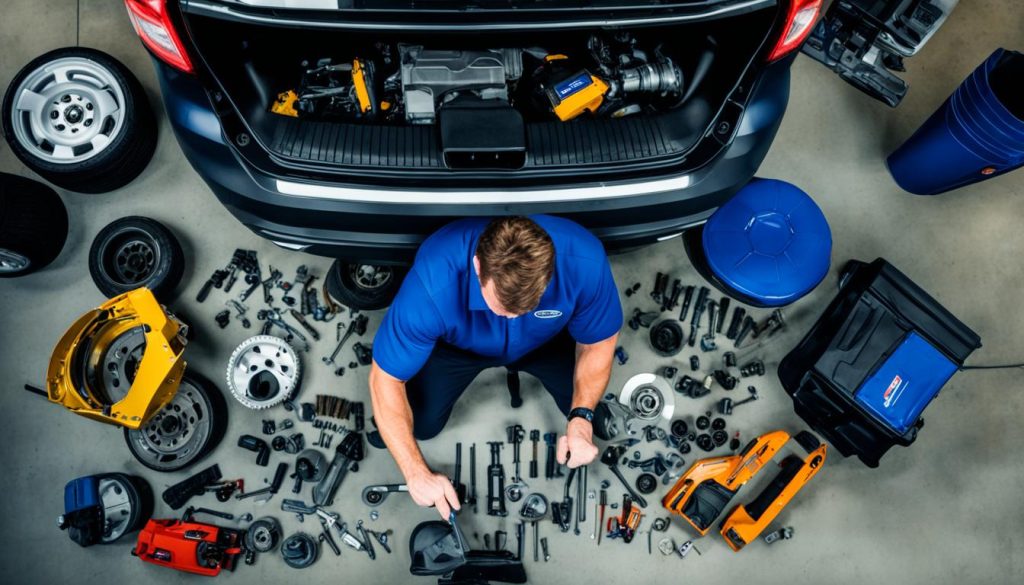
Utilizing the Owner’s Manual for Accurate Diagnostics
The owner’s manual is more than just a booklet; it’s a detailed guide tailored to your Ford Edge ST. Within its pages, you’ll find invaluable information that can assist in diagnosing limited slip differential problems in Ford Edge ST. By referring to the manual, you can interpret dashboard notifications correctly and pursue the best course of action.
Viscous Coupling Issues: Identifying Overheating and Seizures
Overheating is a critical concern for the viscous coupling unit (VCU) in your limited slip differential. When it begins to overheat, symptoms such as wheel hop or driveline windup can occur, indicating that the clutch plates may be seizing. Identifying these issues early on is vital to preventing exacerbation and ensuring safe vehicle operation.
| Symptom | Potential Cause | Recommended Action |
|---|---|---|
| Wheel hop during turns | Seized clutch plates in VCU | Check for overheating; consult a specialist |
| Driveline windup | Limited slip differential binding | Inspect differential fluid; possible professional repair |
| Unusual noises | Worn or damaged differential components | Perform a thorough inspection; replace damaged parts |
| Active dashboard warnings | Electronic LSD system errors | Use diagnostic tools to read error codes; seek expert advice |
If you’re experiencing any of these symptoms, it may be time to enlist the help of a professional mechanic. They have specialized diagnostic tools and the technical expertise required to accurately address common problems with Ford Edge ST limited slip differential.
Ford Edge ST Limited Slip Differential Maintenance Tips
Keeping the limited slip differential (LSD) of your Ford Edge ST in tip-top shape is crucial for both performance and longevity. It’s all about the right care and the right products to ensure you don’t run into the common pitfalls of LSD maintenance.
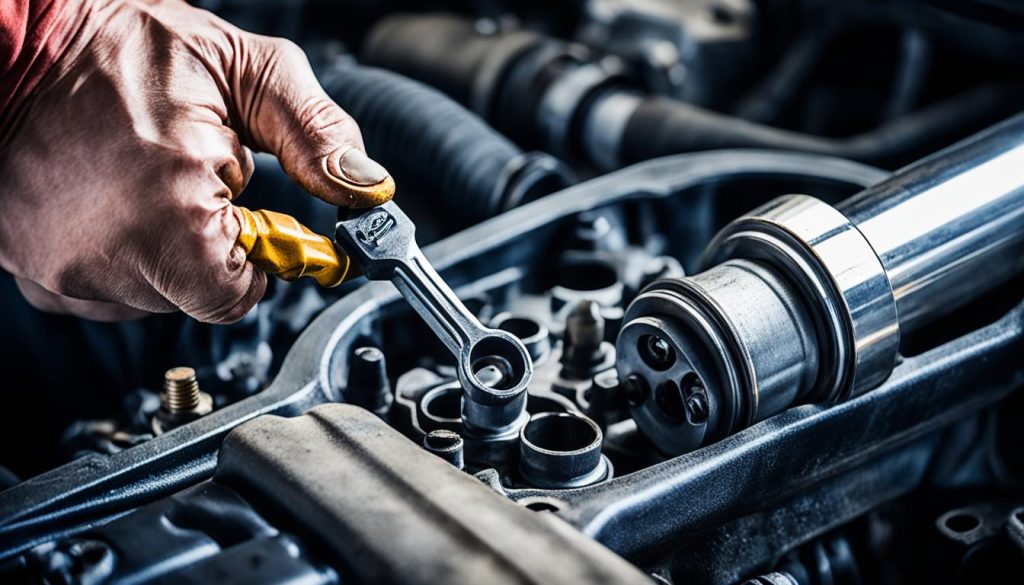
Choosing the Right Fluids for Your LSD
Every part of your vehicle demands specific care, and that includes the LSD. The differential fluid is the lifeblood that keeps it functioning correctly, reducing wear and ensuring smooth operation. High-quality synthetic gear oil, designed especially for limited slip differentials, can provide optimal protection against common issues. Remember, the right fluid not only ensures proper function—it can also significantly extend the lifespan of your differential.
The Risks of Excessive Friction Modifier and How to Avoid Them
Friction modifiers are often recommended to reduce chatter in LSDs, but excessive use can lead to its own set of problems, like causing your LSD to slip. This unwanted slippage may prompt further complications requiring costly maintenance such as a rebuild or replacement of differential components. To avoid these risks, adhere to manufacturers’ recommendations regarding the quantity and frequency of these modifiers.
| Maintenance Aspect | Description | Benefit |
|---|---|---|
| Synthetic Gear Oil | Specifically designed fluids for LSDs offering enhanced protective qualities | Prevents overheating and reduces the need for repairs |
| Appropriate Friction Modifier Level | Keeps the differential clutch engaged properly without over-slip | Maintains traction and minimizes the risk of early wear |
| Regular Fluid Checks | Ensures fluid is clean and at the correct level; change as recommended | Guards against LSD failure and costly damage |
By investing in the right Ford Edge ST limited slip differential maintenance, you are essentially protecting your investment and ensuring peace of mind on the road. And when it comes to how to fix limited slip differential problems in Ford Edge ST, remember that prevention is definitely better than cure. Keep a close eye on your LSD, and it will keep your wheels turning smoothly for miles to come.
How to Fix Limited Slip Differential Problems in Ford Edge ST
Addressing limited slip differential issues in your Ford Edge ST requires a methodical approach to both diagnose and rectify the root cause of the problem. If you’re experiencing performance drawbacks or system alerts, the first step in the troubleshooting process is to accurately pinpoint the issue. For software-related glitches that affect the RDU or ATC, a precise reprogramming via sophisticated tools like the Autel MaxiPRO MP808K is often necessary. Such technical procedures are generally best handled by professionals to ensure that your vehicle’s systems are restored to their optimal state without introducing new complications.
In scenarios where the problem lies within the hardware, such as fretting corrosion on splines or a seized viscous coupling within the differential, it’s essential to undertake repairs that could involve part replacements or even an entire differential assembly overhaul. These types of repairs are detailed and should align with Ford Edge ST specifications, utilizing OEM bar code tags for accurate assembly programming. Doing so guarantees that any new components will perform to the stringent factory standards set by the manufacturer.
Your vehicle is a complex integration of advanced systems designed to work harmoniously, and when one component like a limited slip differential starts showing symptoms of failure, timely and professional intervention is critical. Whether your repair journey involves simple troubleshooting or more extensive servicing, keeping abreast of the recommended maintenance schedules and seeking expert advice when limited slip differential problems arise ensures that you maintain the high performance and reliability of your Ford Edge ST.
FAQ
What are the key signs of limited slip differential problems in my Ford Edge ST?
Common signs include unexpected noises from the differential, performance issues such as reduced traction and abnormal handling, as well as specific electronic messages about the electronic limited slip differential (LSD) system displayed on your dashboard.
How does the limited slip differential affect my Ford Edge ST’s performance?
The LSD is designed to distribute torque evenly between the front and rear wheels, which is especially important during acceleration and cornering. If the LSD is not functioning properly, you may experience wheel hop or driveline windup, and overall vehicle performance can be negatively impacted.
What routine maintenance is necessary for the LSD system in my Ford Edge ST?
Regular maintenance should include checking the differential fluid level, using the correct type of high-quality synthetic gear oil, and avoiding excessive additives like friction modifiers. The Owner’s Manual will provide specific guidance on maintenance intervals.
How can I troubleshoot limited slip differential problems in my Ford Edge ST?
Start by checking your Owner’s Manual for guidance and diagnosing issues based on the specific messages or signs you are experiencing. For complex problems like internal overheating or mechanical failures, it’s recommended to seek professional assistance for accurate diagnostics and repairs.
What should I do if my Ford Edge ST’s LSD system displays a message about overheating or a temporary disablement?
If the system overheats, you should stop the vehicle safely and allow the LSD to cool down before continuing. If the LSD is temporarily disabled, check your Owner’s Manual for troubleshooting steps or visit a professional mechanic for a comprehensive diagnosis.
Can I use any gear oil for my Ford Edge ST’s LSD maintenance?
No, it’s important to select a high-quality synthetic gear oil that is specifically designed for limited slip differentials. Avoid excessive use of friction modifiers or additives that could compromise the function of the LSD.
What are some reasons my Ford Edge ST’s LSD could fail?
Failure can be due to a variety of reasons including lack of maintenance, incorrect fluid type, overheating, mechanical damage, or electronic control issues. Regular inspections and proper use of recommended lubricants can prevent many of these problems.
How do I fix a failing LSD in my Ford Edge ST?
Repair procedures can range from changing the differential fluid to replacing internal components or the entire differential assembly. For software-related issues, reprogramming may be necessary. Due to the complexity of these systems, professional service is often required.
Are there any specific diagnostic tools required for Ford Edge ST LSD issues?
Yes, specialized diagnostic tools such as the Autel MaxiPRO MP808K or similar software may be needed for troubleshooting and reprogramming the electronic LSD system.
How do I know if my Ford Edge ST’s LSD is slipping?
Signs of an LSD slipping include lack of traction during acceleration, especially when cornering, or the vehicle not responding to power distribution as expected. A diagnosis is needed to confirm if the issue is due to the LSD slipping.


